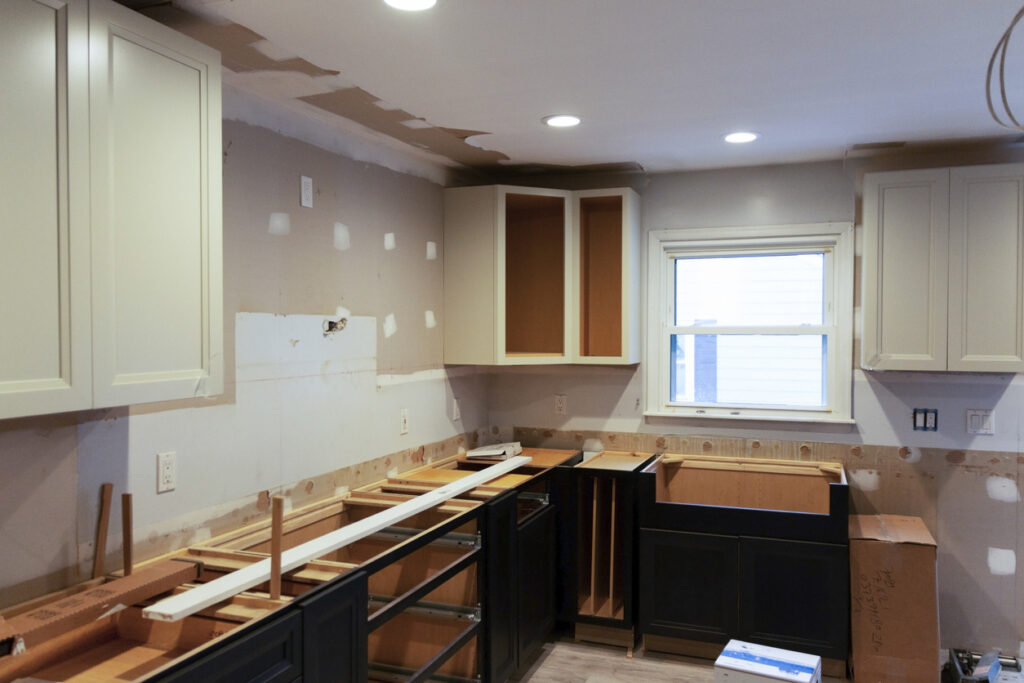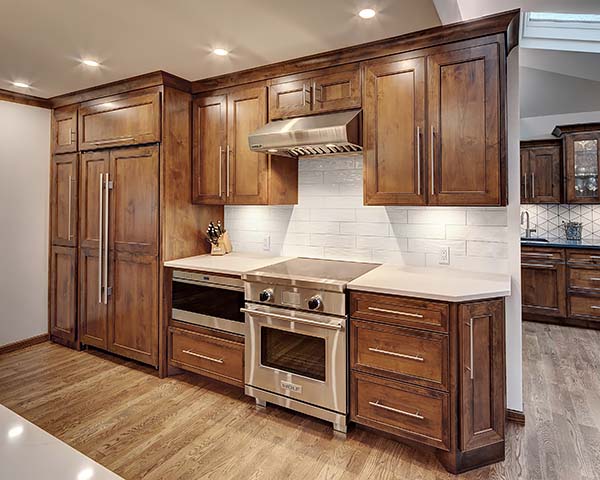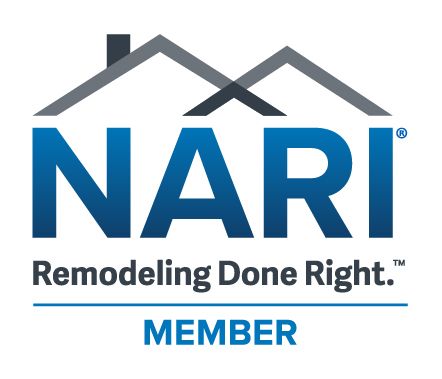Have you ever spilled a cup of water and thought, “It’s just water”? While water might seem harmless, it can cause significant damage when it seeps into places it shouldn’t be—like your kitchen cabinets. If you’ve noticed signs of water damage in your cabinets or suspect it might be an issue, it’s crucial to take action before the problem worsens.
Kitchens are particularly vulnerable to water damage because they’re often located near pipes and appliances that are prone to leaks or malfunctions. Damage often leads to the need for partial or full kitchen remodeling work. Understanding how to identify and address this issue can help protect your cabinets and maintain the integrity of your kitchen.
Before we dive in – it’s important to call an expert for an assessment if you believe water damage is present. A professional can accurately determine the extent of the damage, identify hidden issues like leaks or mold, and recommend whether to repair or replace the cabinets. Their expertise ensures all risks are addressed, preventing further damage and saving you money in the long run.
Contact Dave at Aldrich Contracting!
Signs of Kitchen Cabinet Water Damage
While large pools of water around your cabinets are clear indicators of a leak, water damage is often more subtle and more challenging to detect. Small, hidden leaks can cause significant damage over time, even if they don’t result in visible standing water.
High humidity levels can also lead to moisture buildup, which may not be immediately noticeable but can still cause damage.
To help you identify these issues, here are some subtle signs that your cabinets might be suffering from water damage:
- Cupped or Swollen Wood: When excess moisture penetrates wood fibers, it can cause them to swell or develop a raised appearance. This is a telltale sign of water damage. Carefully inspect the exterior and interior of your cabinets and any particle board for any areas that appear swollen, or warped. These signs indicate that moisture has seeped into the material and is compromising its integrity.
- Discolored Patches or Stains: Another sign of a moisture problem is discoloration, stains, or streaks found on your cabinets. Anything outside the ordinary in terms of discoloration could indicate the presence of water damage.
- Warped Cabinet Doors: A standard indicator of water damage is warping, particularly in cabinet doors. You might notice that the doors no longer close properly or don’t align as they once did. This occurs when moisture causes the wood to swell or distort, making it difficult for the doors to fit flush against the cabinet frame.
- Peeling Paint or Chipped Wood: Water exposure can also lead to peeling paint or chipped wood on your cabinets. If you notice that the paint is starting to peel away or the wood surface is chipping, it could be a sign that water has penetrated the surface, weakening the material underneath.
- Cracks in Cabinets: As you inspect your cabinets for signs of swelling or cupping, be on the lookout for cracks, especially in the butt joints at the corners. These cracks can indicate that water damage has compromised the structural integrity of the cabinets, causing the wood to split or weaken over time.
When to Repair Water-Damaged Cabinets
- Minor Damage: If the water damage is limited to surface issues, such as minor swelling, small cracks, or slight discoloration, repairs are often sufficient. Sanding down the affected areas, applying wood fillers, and repainting or refinishing can restore the cabinets’ appearance and functionality.
- Structural Integrity Intact: If the cabinet frames and doors are still structurally sound, and the damage hasn’t compromised the cabinet’s ability to hold weight or function properly, repairs are a viable option. This might include replacing only the affected parts, such as doors or hinges, or repairing localized damage.
Sometimes Repairing Yourself Is Impossible
Repairing water-damaged kitchen cabinets yourself can be a daunting task. Many find that halfway through the project, they require professional help. Experts can accurately assess whether repairs or replacements are needed and ensure the job is done properly, preventing future issues. While minor damage might be manageable as a DIY project, extensive damage is best left to professionals with the right tools and expertise.
When to Replace Water-Damaged Cabinets

- Severe Structural Damage: If the water damage has caused significant warping, swelling, or rot that affects the cabinet’s structure, replacement is likely the better option. Cabinets that no longer close properly, have sagging shelves, or exhibit extensive wood rot are often beyond repair.
- Mold or Mildew Growth: If water damage has led to mold or mildew, especially inside the cabinets or in hidden areas, replacement might be necessary. Mold can pose health risks and is difficult to completely remove once it has infiltrated wood or particle board.
- Widespread Damage: When damage is widespread, affecting multiple cabinets or the entire kitchen, replacing the cabinets may be more practical and cost-effective in the long run. This is especially true if the damage has compromised the cabinets’ overall appearance and functionality.
- Older or Low-Quality Cabinets: If your cabinets are already old or made from low-quality materials, it may make more sense to replace them rather than invest in repairs. Newer cabinets will not only address the damage but can also offer improved functionality and aesthetic appeal.
Trust Aldrich Contracting for Expert Kitchen Cabinet Work

Water damage can be frustrating to deal with and devastating to kitchen cabinets. As a result, sometimes this type of damage can be repaired and other times it is better to replace cabinets outright. Aldrich Contracting is a full-service remodeling company specializing in kitchen remodels in Overland Park and Kansas City since 2002. We are happy to evaluate the damage, help you determine the best next steps, and get your kitchen restored as quickly as possible.



